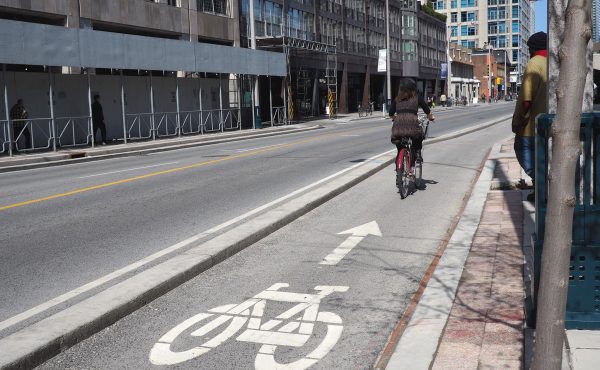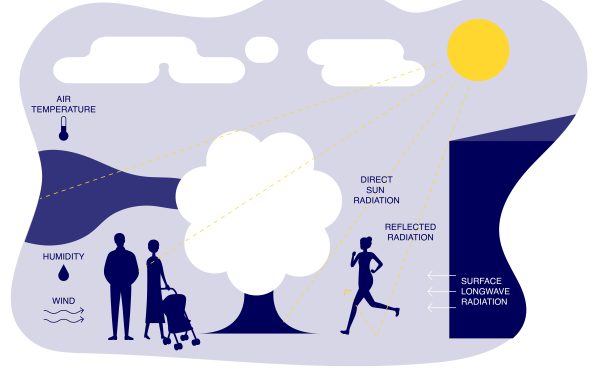
Susan McIsaac is CEO of the United Way of Toronto. Since 1956, The United Way has been working to provide services to the poor and needy in our city. Historically, their efforts to counteract the effects of poverty have been limited to the downtown core. Recent studies, however, have revealed that poverty has migrated to Toronto’s inner suburbs. Spacing sat down with Susan to discuss both how the United Way has adapted to this new reality as well as the effectiveness of their programs.
Spacing: What does the United Way do precisely?
McIsaac: Traditionally, the United Way raises and disperses funds to various local, community building agencies. However, a number of years ago, we looked at having a broader impact across communities. We’ve now moved into providing technical support to agencies who we raise money for and analyzing systemic issues to identify the root cause of problems in various communities.
Spacing: How did the the 2004 report Poverty by Postal Code alter the United Way’s mission and activities?
McIsaac: That was a seminal report for us because it was documented evidence that poverty had shifted and had become concentrated in Toronto’s suburbs. It became clear that to have the greatest impact, we needed to develop a more targeted “place based approach.” In 2004, we then partnered with the City of Toronto to establish the Strong Neighbouhoods Task-force which focuses on the inner suburbs.
Spacing: What are the underlying causes of poverty in Toronto’s inner suburbs?
McIsaac: They are big and there are many. At the core of the issue, it’s individuals and families lacking access to opportunity, whether it’s education or solid employment. In many cases, we know that poverty is intergenerational and at this time, it’s also racialized.
Spacing: Can you tell us more about the Strong Neighborhoods Strategy?
McIsaac: We determined that we needed to have a multi-pronged approach to address poverty and so we looked at our different capacities and assessed what existed across different communities. The strategy became focussed on three key areas. First, it meant collaborating with resident leadership and strengthening capacity of residents to provide their own analyses and solutions to various problems. Secondly, we wanted to improve access to social programs. We realized that services provided by multi-service agencies were only available downtown. We wanted to bring those out to the suburbs to improve access. Finally, we knew that agencies needed space to both deliver programs and set-up community health centres, youth centres, and recreational facilities.
Spacing: What is the status of of Strong Neighborhoods Strategy in terms of present and future levels of funding?
McIsaac: It continues and therefore we continue on the three fronts just described. That being said, this is a really tough fiscal environment and we are constantly looking at how to maintain funding. We’ve worked hard over the last couple of years on our campaigns to ensure that funds come in and we’re delighted that we’ve been able to maintain funding to our agencies. So from our perspective, there’s no immediate risk to funding. However, all three levels of government are clearly working on austerity budgets, so we continue to work with them in the hope that they acknowledge the scale of the problem.
Spacing: How are you able to determine if United Way funded programs are successful in terms of alleviating the issues you’ve discussed?
McIsaac: It’s hard for us to measure but we’ve put in place some evaluation mechanisms. Some of what we know is anecdotal. We tend to look at the level of engagement, the number of residents involved, the number of agencies that have opened satellite locations across the inner suburbs, and the number of programs that are being delivered. Increasingly we’ll rely on more quantifiable outcome based measures. The City’s new Well Being Index will be a great tool for us in evaluating our progress.
Spacing: Since Strong Neighborhoods was launched, the United Way has received a substantial amount of public and private funding. What has that money bought?
McIsaac: Unbelievable programs to develop local leadership both for youth and adults. Working with community development workers and our resident leaders, we know that there is much better access to programs. On a more basic level, the money buys facilities, equipment, and tangible programs that provide employment services, daycare, and leadership development. Community health centres have been set up in various hubs. Residents tell us that they’re now able to gain much quicker access to good health care, right in their own communities. I would describe all of these things as tangible outputs from the work that has been underway in the last 5 years.
Spacing: Why is the funding of these facilities and programs necessary? What are the consequences for various communities if they didn’t exist?
McIsaac: If I look at the tragic events of the last month, one of the things we’ve all been struck by is the importance of offering youth some alternatives. Young people actually need great support in educational attainment. They need to have good programming outside of school hours that provide them with personal leadership, recreation and good role modeling. We also need to help youth develop manageable skills that they can use in pursuit of both part-time and long-term employment.
Spacing: Is gang prevention one of the stated or unstated goals of Strong Neighborhoods?
McIsaac: It’s an unstated goal. I would redefine it not as gang prevention but as creating meaningful opportunities for our youth so that they have viable options to gain employment and don’t have to turn to gangs.
Spacing: Why should a Torontonian who doesn’t live in a priority neighborhood care about poverty?
McIsaac: I honestly believe that we should all care about what happens in our city. If we allow some neighbourhoods to fall behind, it impacts us all. It also goes beyond poverty. There has been so much work done in the last few years around the issue of income inequality and what it actually does to the health and well being of a city. Primarily, we should care because poverty and inequality affect fellow Torontonians. Secondly, we should care because a lack of access and opportunity creates a divide in this city that takes many decades to overcome.
Photo by jaygoldman





7 comments
Poverty and inequality are largely a result of government intervention in land use through zoning, development charges and property taxes making it more profitable for builders to build outward rather than upward. In particular, apartments are taxed at a higher rate than other types of dwelling units (because they are considered to be a business), even though the cost to provide services per apartment is lower.
The above comment is not true in the slightest. If his thesis was correct they downtowns everywhere would be rich and all the suburbs poor. Certainly there is a trend towards this, but the same policies were in place for the last 60 years when the downtowns were poor and the suburbs more wealthy.
What perpetuates poverty is federal and provincial government policies that have nothing to do with land, but have everything to do with providing tax cuts and incentives to larger corporations and their shareholders. Even more so, union-busting and a loosening of labour laws are making the poor more poor.
Things like a lack of good transit only exacerbates poverty, but are not certainly the cause. If that was the case the Bridal Path, Central Etobicoke, and the Beaches would be shanty towns
There are two separate questions:
1 Why is there poverty in Toronto? 2. Why is poverty concentrated in the inner suburbs?
I’ll just deal with the first question here. Povery in Toronto has a several underlying causes, not restrited to Toronto.
a) The type of job an unconnected, semi-skilled person can find in the Western World is getting rarer with globablization. Whether we have conciously decided it or not, our society would rather pay 5% of our potential workforce welfare than pay them $15/hour to make stuff when we can pay someone in Chine 50 cents an hour.
b) Family ties have eroded so that elderly, disabled people, mentally ill, single mothers, etc. are left to fend for themselves more than was the case 100 years ago. Again, whether consiously or not society has decided they would rather pay for the care of their less-capable loved ones through government programs than by caring for them in person. This tends to stratify society into higher and lower income households, where formerly there were more persons of different incomes within each household.
c) For those working hard to get off of government support programs, there is a huge disincentive. The programs are run as silos, each of which claws back their benefits very quickly when a certain income threshold is reached. Paradoxically, people often find they can’t afford to work full-time because the benefits lost exceed their increased income. This, at least, is not as ingrained into society as a whole, and could be addressed by all three levels of government by simplying the income support system to a single payment, adjusted for city of residence, number of dependents, age, mental and physical handicaps, etc. Then everything else could be left to the marketplace, the provinsion of shelter, medications, transportation, etc. The income suppliment would be phased out gradually, so each new dollar earned would actually increase the workers income by say 75% or 80%. Not only would this encourage more people recieving assistance to become independant, but it would also save billions in reducing the number of civil servants needed to administer all the piecemeal programs.
Why is poverty concentrated in the inner suburbs? Basically, wealth pushes poverty out of desirable areas. The poor are left living in the places those who can afford to chose not to. Most people want single family homes, and Toronto doesn’t have enough to go around, so these are priced out of reach of just about everyone except highly paid professionals and businessmen, or double-income households.
Most single-income singles and young working couples can afford to buy or rent condo or a downtown apartment. If they can’ get a house, at least they will be close to the downtown attractions. Very few who have a choice want to live in an apartment which is 90 minutes from downtown, so the apartments built around the northern and eastern edges of the city, far from the subways are left to the poor.
About the only pockets of poverty left in the inner city are the TCHC buildings like Regents Park, where the government has basically said to live here you have to be poor. Get a decent income, and out you go! Thank goodness they are beginning to redevelop these as mixed income neighbourhoods, although as long as any housing is only for “poor people”, this problem will persist.
Laurie, while I agree with most of what you said there are two points that need to be added. First, regarding employment type. It should be noted that we cannot compete with China and other developing nations in every field. I can hire any manner of professional, as qualified and capable as our own, for a fraction of western ones. The only difference is that they are prohibited from working here. We really are living in a Conservative Nanny State where policy dictates the winners and losers. Not any invisible hand.
Secondly, the increase in poverty in Toronto’s suburbs predated China’s entry into the WTO. While the issues you have raised are certainly valid they do not explain why, at the start of the decline, it was unique to Toronto. For this you need to look at the move to CVA taxes and the property tax differentials the enshrined. Employment supporting development is prohibitivley expense in this city. Conversley residential development is heavily subsidised.
After WWII, white flight occurred because those who could afford to move from the old city to the suburbs were encouraged to do so through below-cost-recovery development charges (and no development charges prior to the 1970s) and substandard and/or cramped living conditions downtown. I calculated that 60% and 12% of average household income of tenants in apartments is directed toward housing and property taxes, respectively, compared to 40% and 3% of the equivalent for detached housing property owners. The locations of apartments and public housing is largely random (neighbourhoods which have historically been wealthy have very little of this type of housing).
I don’t think it is accurate to generalize that employment supporting development is prohibitively expensive; the quality of services are superior in Toronto (compared to the 905 region), including the fact that certain services are not provided to commercial or mixed-use buildings in the 905 region. While detached housing is likely subsidized to a certain extent, condos and apartments are likely subsidizers.
“poverty has migrated to Toronto’s inner suburbs” – more like poverty has been displaced to the inner suburbs…migration sounds like a choice.